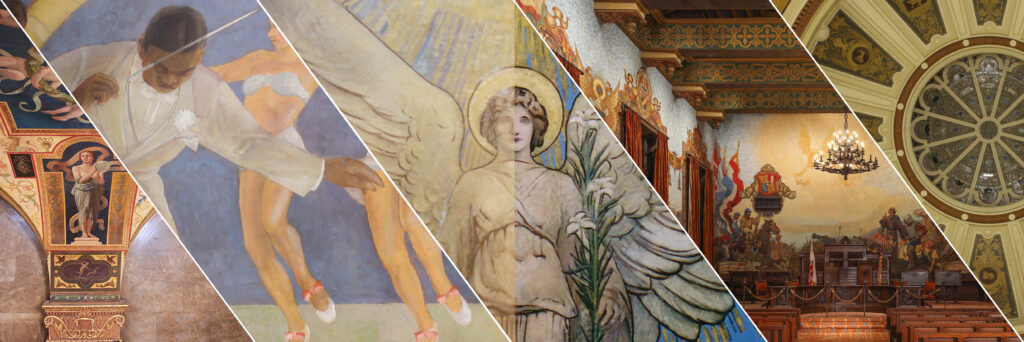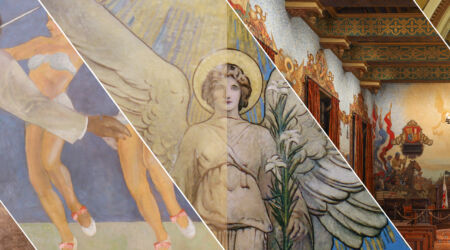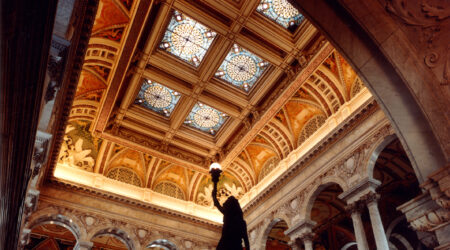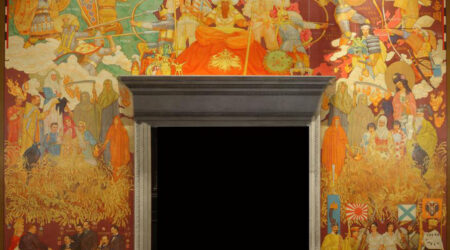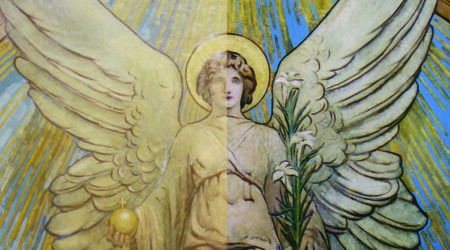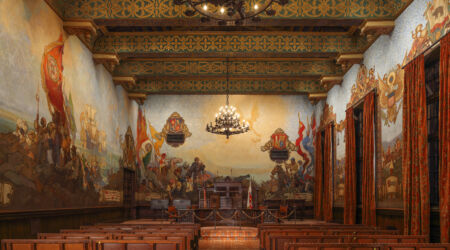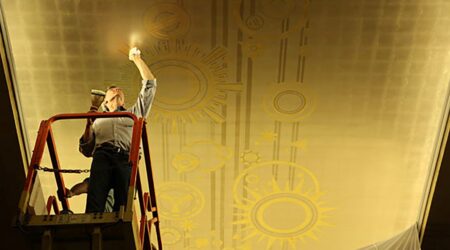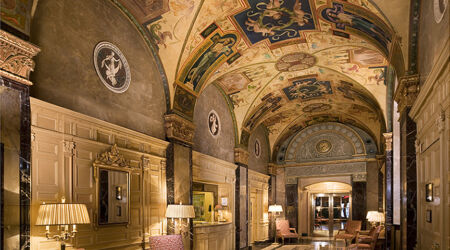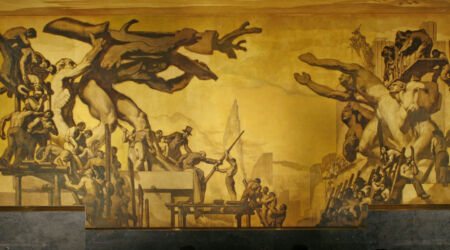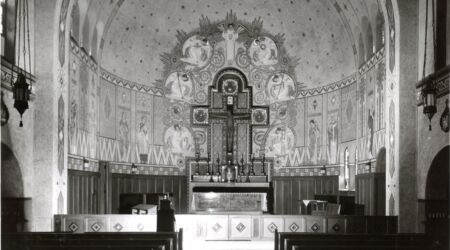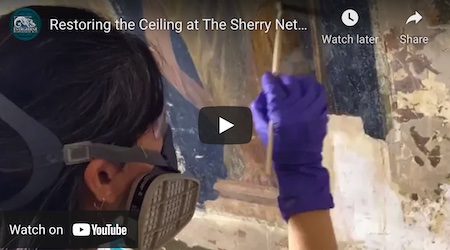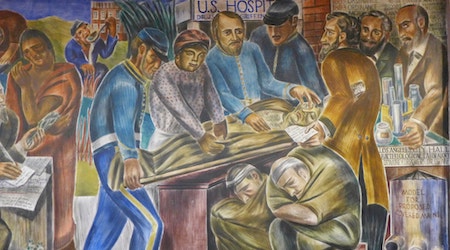Having historic murals evaluated and treated by formally trained conservators is the best way to prevent irreversible damage. Our team of craftspeople and artisans hold the immeasurable experience from working on the conservation and restoration of many of the most iconic and important historical murals in America, informing our understanding of how murals interact within architecture in the public context.
EverGreene conservators have been entrusted with the conservation of murals in many of our nation’s landmarked civic, institutional, and sacred spaces, including works by Edwin Blashfield, Kenyon Cox and Gonippo Raggi, well-known WPA artists, as well as more contemporary works.
In addition to addressing the painted surface, we address problems with mural substrates, including canvas and plaster. An important aspect of conservation treatment is that any new painting (filling areas of paint loss and/or returning the artwork to its original appearance) is isolated from the original in a reversible manner. This allows complete removal of previous treatments that may have aged poorly, without damaging the original. If approached with a conservation mindset, a valued mural, even one in a deteriorated state, can be preserved for posterity.
EXAMPLES OF CONSERVATION OF HIDDEN MURALS:
St. Aloysius Church, Bowling Green, OH
Testing determined overpainted Felix Lieftucher murals (Keim paint on textured plaster) was sufficiently resilient to retrieve using gentle water-based liquid solvents. Microscopy identified historic colors, an isolating varnish was applied, and areas of loss in-painted with reversible conservation paints.
Sherry-Netherland Hotel, New York, NY
The stunning original mural from the 1920s had been hidden for decades underneath layers of white paint and other non-historic finishes until it was brought back to its original appearance by our conservators.
